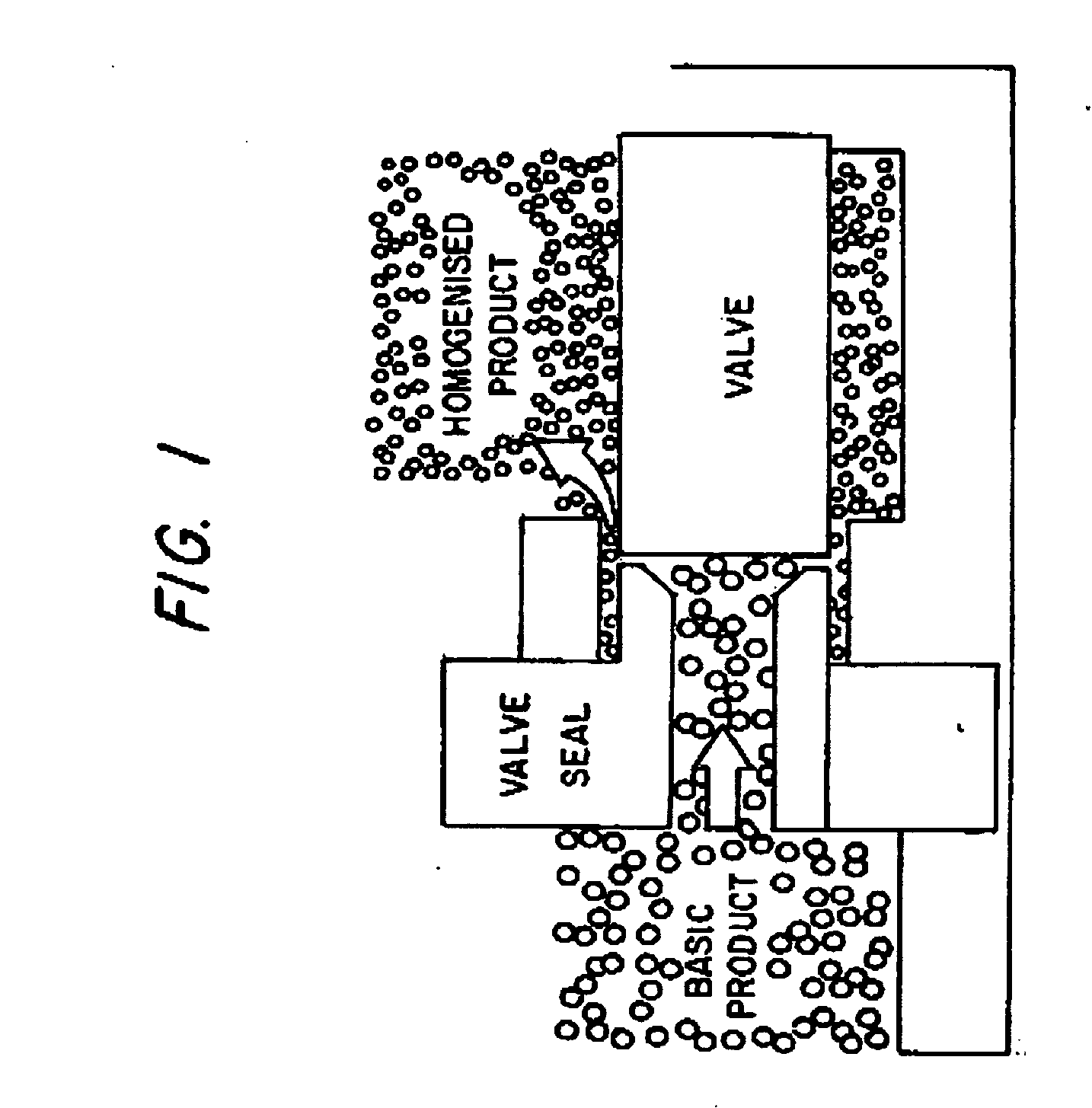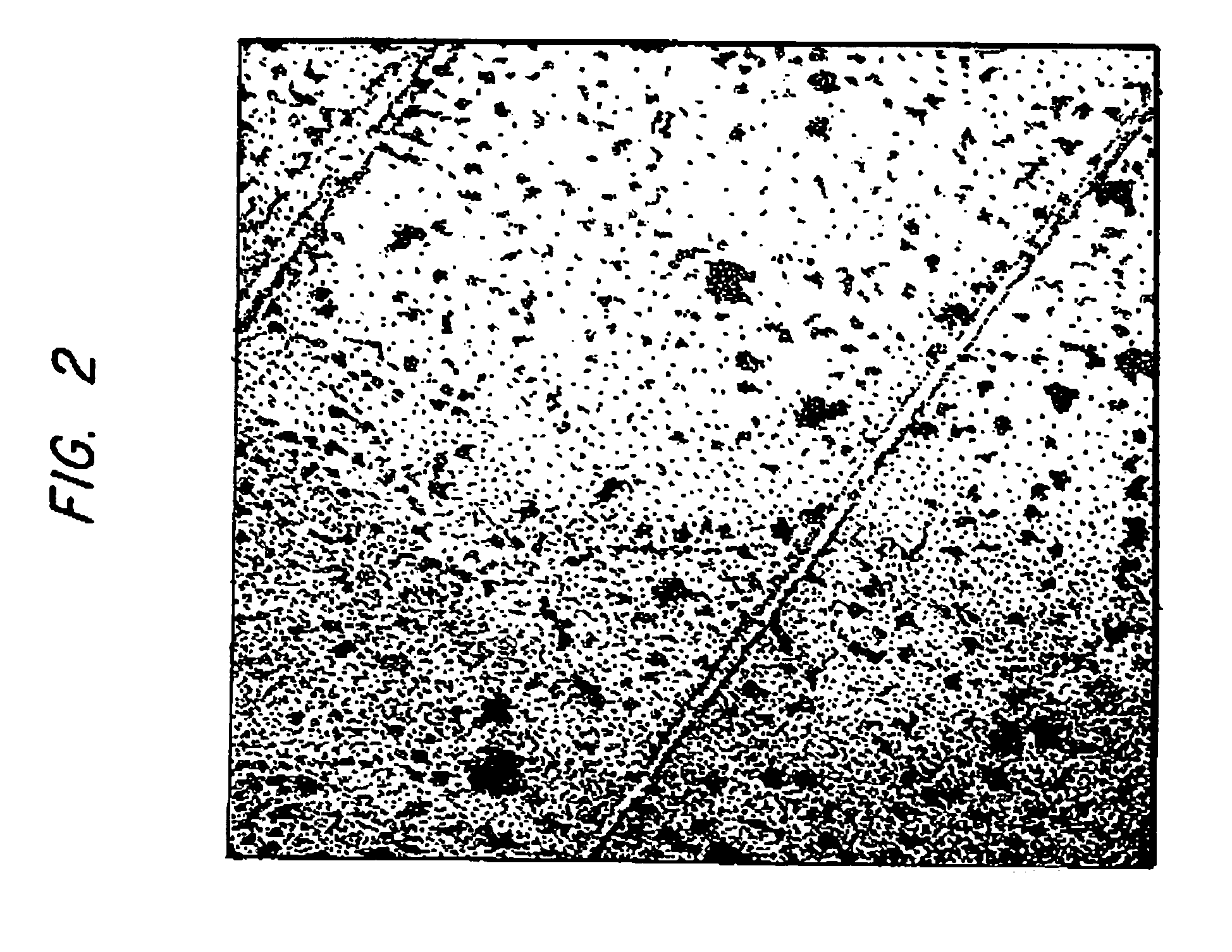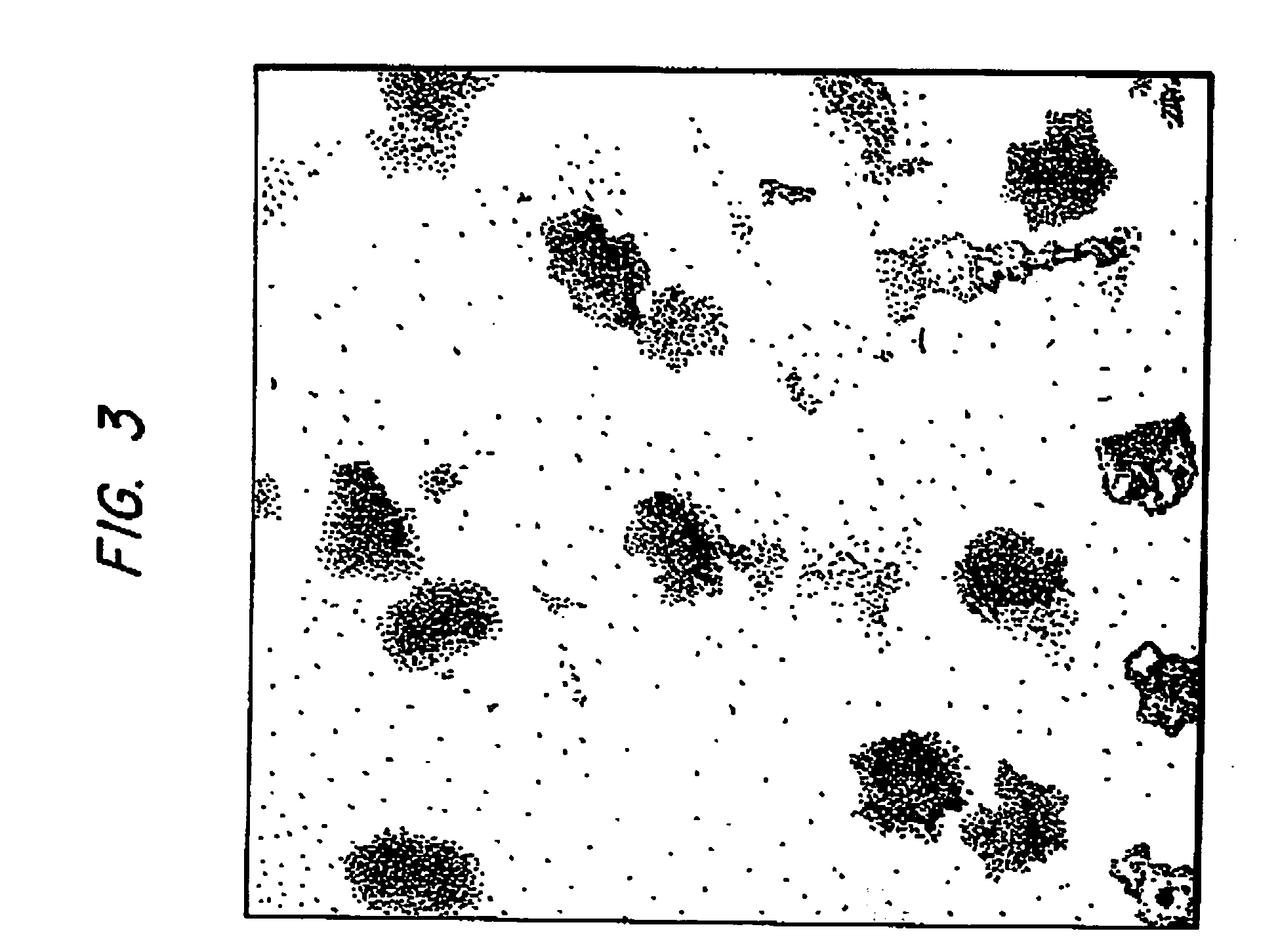Microgels in crosslinkable organic media
a technology of organic media and microgels, applied in the direction of petroleum industry, thickeners, coatings, etc., can solve the problems of inability to realize the transfer of this process from the laboratory scale into a large-scale industrial plant, both from economic aspects and work safety aspects, and the mechanical properties, swelling properties and stress cracking corrosion etc. are impaired
- Summary
- Abstract
- Description
- Claims
- Application Information
AI Technical Summary
Benefits of technology
Problems solved by technology
Method used
Image
Examples
example 1
SBR Gels Modified with Hydroxyl Groups (RFL 403A) in Desmophen 1150
[0145] It is shown in the example described in the following that a microgel composition according to the present invention having particle diameters of 220 nm and smaller can be prepared using a microgel based on SBR and modified with hydroxyl groups with a homogenizer by applying 900 to 1,000 bar.
[0146] The composition of the microgel composition according to the present invention is shown in the following table:
1.Desmophen 115079.72.RFL 403A203.Tego Airex 9800.3Total100
Desmophen 1150 is a branched polyalcohol with ester and ether groups from Bayer AG for the production of viscoelastic coatings.
[0147] Tego Airex 980, an organically modified polysiloxane, is a deaerating agent from Tego Chemie Service GmbH.
[0148] RFL 403A is a crosslinked, surface-modified rubber gel based on SBR from RheinChemie Rheinau GmbH.
[0149] RFL 403A contains 70 wt. % butadiene, 22 wt. % styrene, 5 wt. % ethylene glycol dimethacrylat...
preparation example 1
for RFL 403A
[0150] Microgel based on hydroxyl-modified SBR, prepared by direct emulsion polymerization using the crosslinking comonomer ethylene glycol dimethacrylate
[0151] 350 g of the Na salt of a long-chain alkylsulfonic acid (368.4 g Mersolat K30 / 95 from Bayer A G) and 27 g of the Na salt of methylene-bridged naphthalenesulfonic acid (Baykanol PQ from Bayer AG) were dissolved in 2.03 kg water and the solution was initially introduced into a 5 I autoclave. The autoclave was evacuated and charged with nitrogen three times. Thereafter, 872 g butadiene, 274 g styrene, 69 g ethylene glycol dimethacrylate (90%) and 38.5 g hydroxyethyl methacrylate (96%) were added. The reaction mixture was heated up to 30° C., while stirring. An aqueous solution containing 25 g water, 180 mg ethylenediaminetetraacetic acid (Merck-Schuchardt) and 150 mg iron(II) sulfate*7H2O, 400 mg Rongalit C (Merck-Schuchardt) and 500 mg trisodium phosphate*12H2O was then metered in. The reaction was started by addi...
example 2
SBR Gels Modified with Hydroxyl Groups (RFL 403A) in Desmophen RC-PUR KE 8306
[0157] In the example described below it is shown that compositions according to the invention which contain particles or particle agglomerates having particle diameters chiefly in the range from 50 nm to 500 nm, at an average particle diameter of approx. 250 μm, can be prepared using microgels based on SBR and modified with hydroxyl groups in a homogenizer by application of 900 to 1,000 bar.
[0158] The composition of the microgel paste is shown in the following table:
1.RC-PUR KE 830693.32.Byk-LP X 63310.23.RFL 403A6.5Total100
[0159] RC-PUR KE 8306 is an activated polyol blend for the preparation of PU by the cold-cast process from RheinChemie Rheinau GmbH.
[0160] RC-DUR 120, an aromatic polyisocyanate from RheinChemie Rheinau GmbH, is employed as the crosslinking component.
[0161] Byk-LP X 6331 is a deaerating agent for PU systems from Byk-Chemie GmbH.
[0162] RFL 403A is a crosslinked, surface-modified r...
PUM
| Property | Measurement | Unit |
|---|---|---|
| temperature | aaaaa | aaaaa |
| particle size | aaaaa | aaaaa |
| glass transition temperatures | aaaaa | aaaaa |
Abstract
Description
Claims
Application Information
 Login to View More
Login to View More - R&D
- Intellectual Property
- Life Sciences
- Materials
- Tech Scout
- Unparalleled Data Quality
- Higher Quality Content
- 60% Fewer Hallucinations
Browse by: Latest US Patents, China's latest patents, Technical Efficacy Thesaurus, Application Domain, Technology Topic, Popular Technical Reports.
© 2025 PatSnap. All rights reserved.Legal|Privacy policy|Modern Slavery Act Transparency Statement|Sitemap|About US| Contact US: help@patsnap.com



